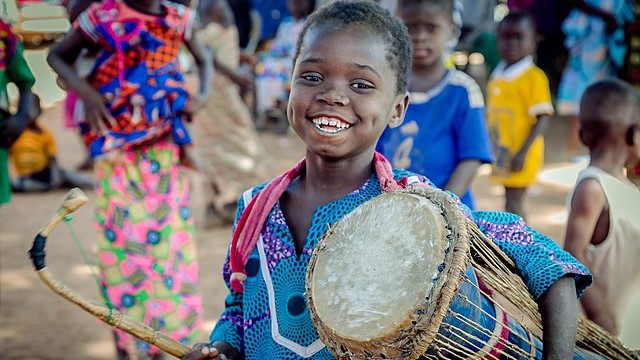In Ghana, rhythm is more than sound. It is a language, a ritual, and a social glue, binding communities through ceremonies, storytelling, and everyday life. Across the country, traditional drumming remains a force that conveys history and emotion, its cadences echoing from coastal villages to the northern savannas, and increasingly, across international stages.
The drum has long been regarded as the heartbeat of Ghanaian society. For the Akan, the sound of ensemble drums accompanies funerals and festivals, underscoring both grief and celebration. Among the Ewe, drumming is inseparable from dance, each rhythm carrying symbolic meaning, whether honoring ancestors or marking rites of passage. The practice is at once musical and ceremonial, situating performers within a larger communal narrative.
The djembe, though more closely associated with the Mandé people of West Africa, has become a fixture in Ghanaian performance circles. Its tonal versatility—capable of expressing sorrow, triumph, and joy—makes it a favored instrument at community gatherings. In open courtyards, players strike its goatskin head with controlled precision, inviting dancers into the circle while sustaining a conversation between past and present.
In the country’s northern regions, the talking drum—sometimes called dawuro—is less a musical instrument than a mode of communication. By tightening or loosening its strings, drummers alter the pitch to mimic human speech patterns, transmitting messages that once traveled across villages before modern telecommunications. The instrument still carries spiritual weight, often featured in ceremonies that blur the line between the physical and the ancestral worlds.
Festivals, weddings, and funerals rarely unfold without the accompaniment of drum ensembles. The music is both celebratory and solemn, amplifying moments of collective memory while guiding the rhythm of rituals. In these gatherings, drumming is not ornamental—it is central, providing continuity across generations and affirming bonds within the community.
In recent decades, Ghana’s drumming traditions have drawn increasing global attention. Musicians and scholars alike have incorporated these rhythms into genres ranging from jazz and reggae to hip-hop and Afrobeat. International collaborations, particularly with Ghanaian drummers in Accra, Kumasi, and Tamale, have underscored how traditional percussion can adapt to contemporary frameworks while retaining its cultural essence. The result is not dilution but expansion—an affirmation that ancient practices can shape modern soundscapes.
What emerges from these varied contexts is a recognition that drumming in Ghana is less about performance alone than about connection—between people, between the living and the spiritual, between the local and the global. Each strike of the drum reverberates with meaning, a reminder that music is not merely heard but lived.
Sources:
- Nketia, J.H. Kwabena. The Music of Africa. W.W. Norton & Company, 1974.
- Collins, John. African Pop Roots. Focal Press, 1985.
- Chernoff, John Miller. African Rhythm and African Sensibility. University of Chicago Press, 1979.

